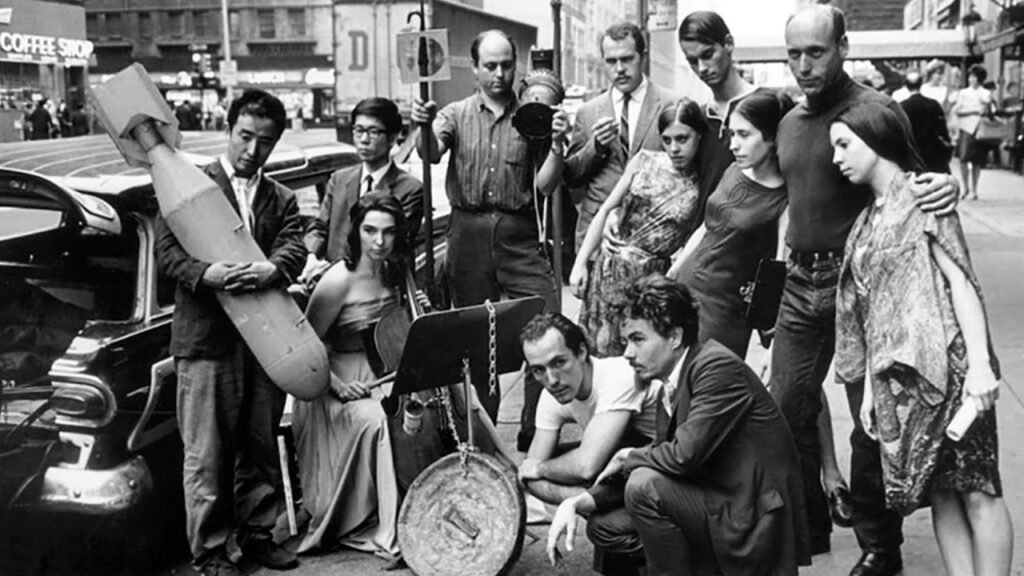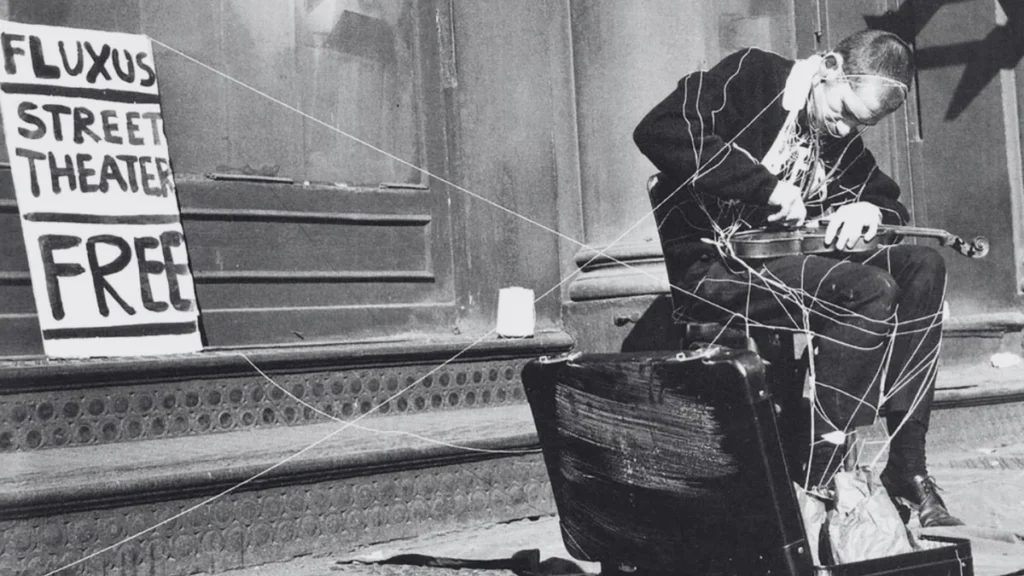The 1960s witnessed the rise of an art movement that challenged every established convention. Named Fluxus, this group of artists, musicians, and performers turned art into a space of collective action, political provocation, and aesthetic rupture. Their proposal was not merely aesthetic but philosophical: to dismantle the boundaries between art and life.
Marked by performative actions, ephemeral objects, and a critical stance toward the art market, Fluxus continues to influence artistic production to this day. It appears in museums, galleries, and institutions that value engaged and liberating art — like MoMA, which holds one of the largest collections of Fluxus works.
The Origins of Fluxus and Its Philosophy
The term “Fluxus” was coined by George Maciunas, a Lithuanian-American architect and artist who saw fluidity as the movement’s core. Inspired by John Cage’s ideas and the Dadaist spirit, the group rejected any form of institutionalized, elitist, or profit-driven art. According to the study Fluxus and the Essential Questions of Life, from the University of Michigan, published in 2011, their aim was “to merge art and life in a direct and unpretentious way.”
Fluxus artists such as Yoko Ono, Nam June Paik, Alison Knowles, and Dick Higgins created works that combined performance, sound, visual poetry, and happenings. One of the movement’s main formats was the event score, simple and open instructions that anyone could perform — such as “light a match and let it burn to the end.”
This radical approach to expression gave the movement unprecedented power. By allowing the audience to also be the artist, Fluxus shattered the pedestal of individual genius. It created truly irreverent art, where laughter, absurdity, and improvisation had a central role.
Against the Market, For the Experience
One of Fluxus’s core principles was its explicit opposition to the commercial art system. George Maciunas even wrote manifestos directly attacking what he called “commodity art.” Instead of unique and valuable pieces, Fluxus proposed accessible multiples, undocumented performances, and shared experiences.

The critique of the market was part of a larger critique: of a capitalist and bureaucratic society that had turned even creativity into a commodity. As Ken Friedman wrote in The Fluxus Reader (1998), “Fluxus was not only an artistic movement but a political gesture against the domestication of creativity.”
This stance directly influenced later movements such as conceptual art and collaborative practices from the 1980s and 1990s. Many contemporary collectives owe their expressive freedom to the provocations of Fluxus — from the Chilean group CADA to Brazil’s Opavivará.
Legacy and Presence in Contemporary Art
Although Fluxus didn’t last as a cohesive group for long, its influence endures. Institutions such as Tate Modern and Centre Pompidou have hosted exhibitions dedicated to the movement. MoMA, as mentioned, houses emblematic works by artists like Paik and Ono in its permanent collection.
Moreover, academic interest in Fluxus is growing, along with digital platforms that recover historical performances and key texts. New generation artists continue to explore irreverence as a method, creating hybrid actions between art and life, body and politics, gesture and irony.
In this sense, Fluxus is not merely a past movement but an ongoing field of possibilities. Its rejection of rigid boundaries and its emphasis on creative processes as collective experiences continue to challenge how we define art today.



